 Want more conversions from your social media ads?
Want more conversions from your social media ads?
Wondering how to successfully target buyers at every stage of the sales process?
Mapping your buyer personas and testing your creatives let you deliver ads that speak to a buyer's immediate needs and concerns, resulting in higher conversions.
In this article, you'll discover how to serve optimized social media ads that generate sales from all of your customers.
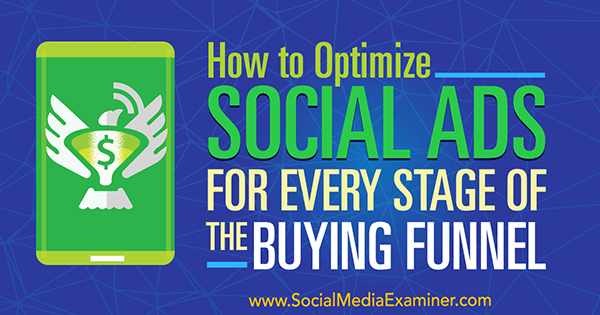
#1: Create Buyer Personas
Before you create a single ad, you need to spend significant time at the research stage. As part of this process, you'll identify your buyer personas, map them to buying stages, and develop a list of unique selling propositions (USPs) to target when running your first series of ad tests.
Start by conceptualizing your personas. Take into account not only demographics, but psychographics as well. Your persona should include (at a minimum) age, gender, location, education, job/career path, relationship status, children/pets, household image, personal goals, and specific preferences related to your brand.
Create a Brand Persona
The first persona to create is your brand persona, which embodies the voice and vision of your messaging. This persona represents the largest share of your target audience and embodies many of your brand's attributes and values; it's the default voice of your brand.
First, brainstorm the characteristics of your brand persona.
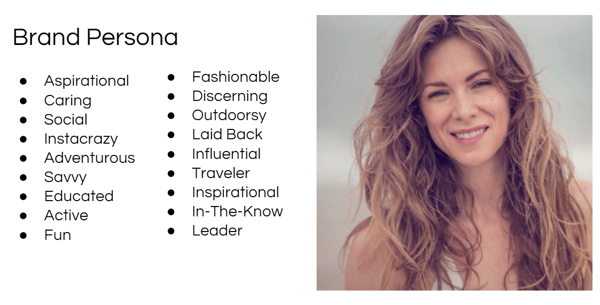
Next, include demographic and psychographic data.
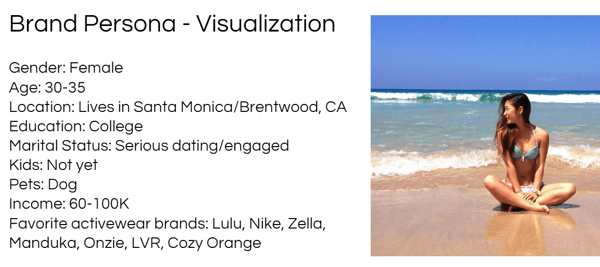
Finally, create a narrative around your buyer persona.
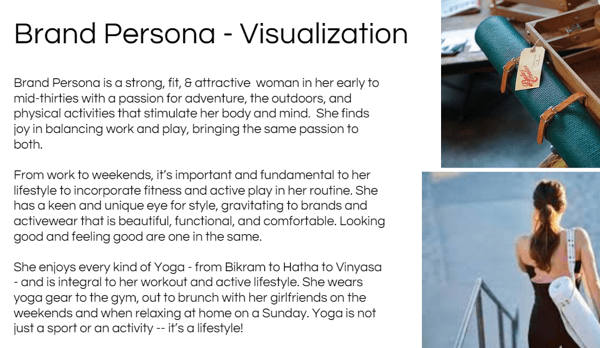
When you're finished with your brand persona, you'll have a visual of whom you're “talking to” when you craft ads and design visual and textual creatives.
Create Additional Buyer Personas
Get World-Class Marketing Training — All Year Long!
Are you facing doubt, uncertainty, or overwhelm? The Social Media Marketing Society can help.
Each month, you’ll receive training from trusted marketing experts, covering everything from AI to organic social marketing. When you join, you’ll also get immediate access to:
- A library of 100+ marketing trainings
- A community of like-minded marketers
- Monthly online community meetups
- Relevant news and trends updates
After you create your foundational persona (your brand persona), you can move on to create new buyer personas. There are tools you can use to help with this process, such as Personapp, Xtensio, Up Close & Persona, or HubSpot's free persona creator tool, MakeMyPersona.
To use HubSpot's tool, go to MakeMyPersona.com and click Start Making My Persona. Then proceed through the questionnaire, providing as much detail as possible.
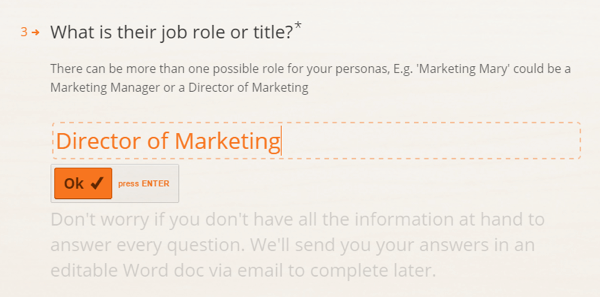
Once you finish and submit the form, you'll receive an email with your fully realized persona.
Repeat this process for each of your potential buyer personas.
#2: Map Buyer Personas to the Buying Funnel
Now that you know whom you're talking to, you need to delve even deeper into each buyer persona's needs at every stage of the buying funnel: Awareness, Consideration, and Decision.
- At the awareness stage, the persona has pain points but does not know or understand the solution to the problem.
- Once the persona reaches the consideration stage, the persona is actively researching options to fix his or her pain points.
- At the decision stage, he or she simply has to select a product to purchase and a company to purchase it from.
Use a mind map as a simple, step-by-step solution for mapping buyer personas to buying stages. Start by listing your buyer personas. Include the names of your personas and images of each one.
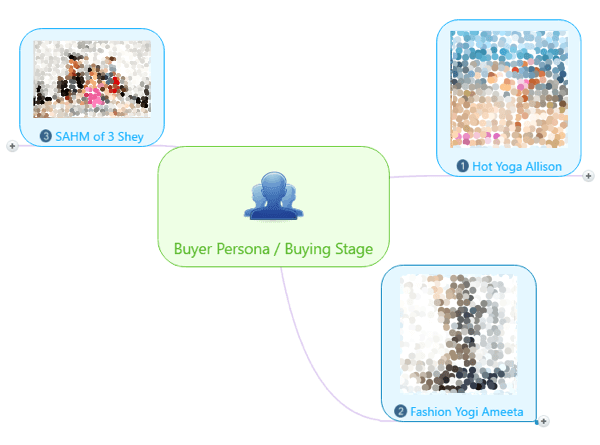
Now brainstorm pain points for each persona, starting with the awareness stage. Consider what problems your persona faces at this stage.
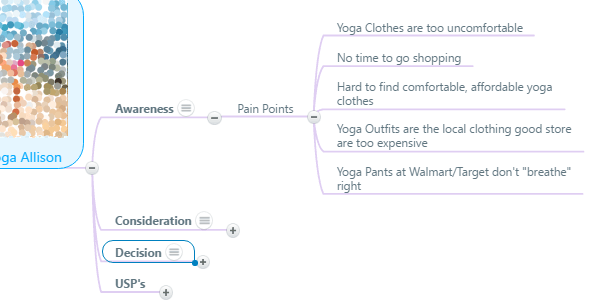
Next, identify what research goes into the consideration stage. Where does your persona search for answers? What keywords does she use to search? Also identify what questions she's asking to solve different pain points.
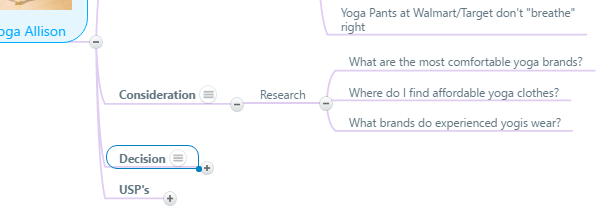
For the decision stage, think about what your persona considers before making a purchase. What issues are of most interest to her? Some of the primary ones include pricing, delivery time frames, return policy, shopping cart usability, mobile compatibility, reviews, and available coupons.
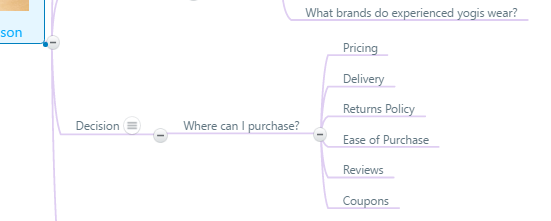
Then, consider what unique selling propositions will appeal to this persona. Based on your research, what are the most powerful USPs that will move this persona to action when seeing targeted ads?
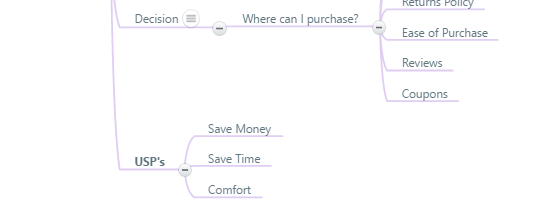
Follow this same process to map each of your buyer personas to every stage of the buying funnel.
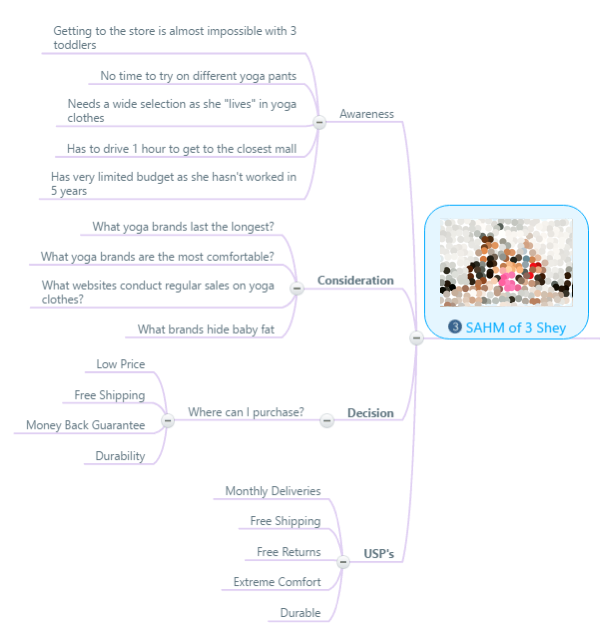
Finally, create a brand persona and value proposition grid. In this value proposition, list your personas and the USPs that you'll use when creating ads.
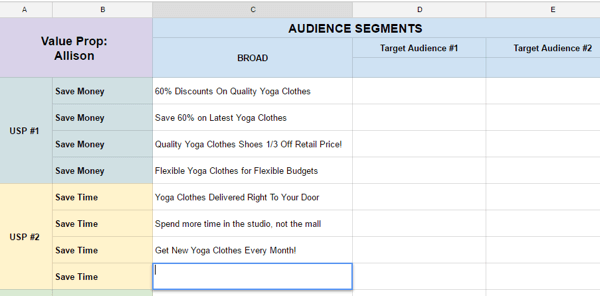
At the end of this process, you'll have an overview of your target audience to use in your ad testing process. With your preliminary research complete, you're ready to move on to the ad creation and testing stage.
#3: Test Initial Ad Copy and Images
Having prepared yourself, you'll now need to conduct a series of tests designed to find the best images, ad text, headlines, descriptions, placements, and audiences. Every one of these variables becomes a test element, so it's important to have a strategic and methodical approach to testing each one.

Discover Proven Marketing Strategies and Tips
Want to go even deeper with your marketing? Check out the Social Media Marketing Podcast! Publishing weekly since 2012, the Social Media Marketing Podcast helps you navigate the constantly changing marketing jungle, with expert interviews from marketing pros.
But don’t let the name fool you. This show is about a lot more than just social media marketing. With over 600 episodes and millions of downloads each year, this show has been a trusted source for marketers for well over a decade.
The first campaign, starter ads, focuses on finding the best images and ad copy. For each starter campaign, you'll have fixed and variable elements (such as headlines, link descriptions, images, and placement) in addition to ad text.
Your first goal is to test ad image, copy, and placement. Here's an example of how to organize this:
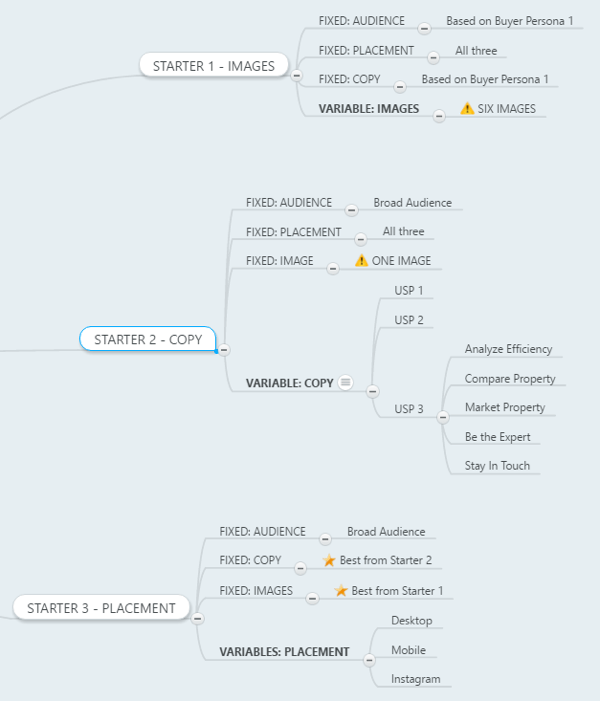
Take each buyer persona through the process of testing images, copy, and placement. As you develop images and content, think of the buying stages and make sure you include images and content for each stage.
Test Ad Images
Images are critical to an ad's performance. Images with happy women are known to perform best overall, but that might not be the case for your audience. Try images with or without text and variations of text placement. You can also try using animated GIFs or short videos.
Facebook has different ways to incorporate images into your ad. For example, the image carousel allows you to attach different headlines and URLs to each image, giving you more ways to test images, calls to action, and click-through rate (CTR).
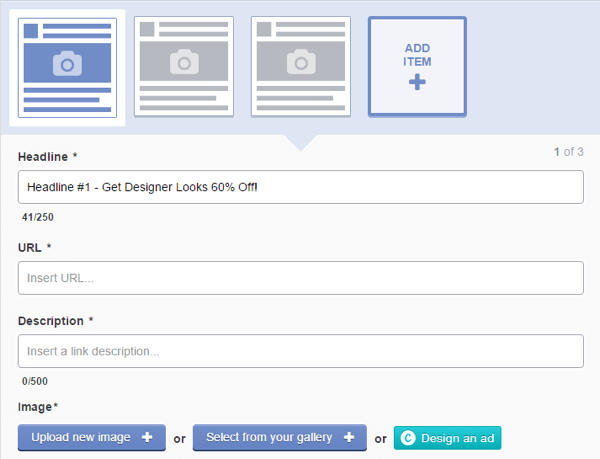
Test Copy
To test ad copy, use a tool like AdEspresso. You can enter different variations of each ad element and the tool will shuffle them to produce multiple ad combinations. You can run a single starter ad campaign that tests hundreds of ads based on just a few variables.
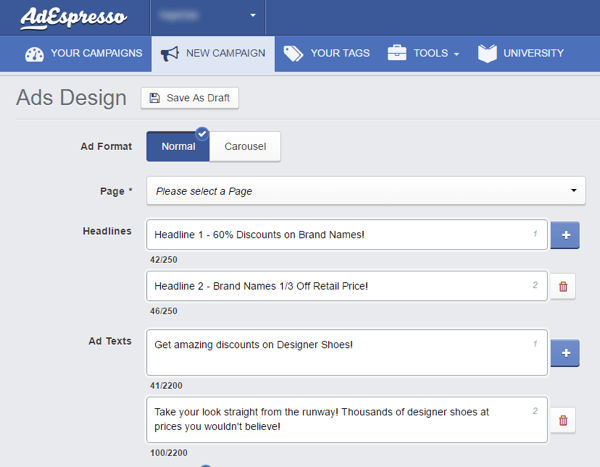
You may want to start slowly to get a feel for the Facebook ad platform and your new campaign, but Facebook is ultimately a game of quantity, not quality. Facebook's ad platform is set up to reward campaigns that constantly update ads to improve performance.
The goal of any Facebook as set shouldn't be to produce one perfect ad campaign. You should be running multiple campaigns and constantly feeding Facebook with new content.
Test Placement
Test ad placement to find out where your audience clicks. That's where the bulk of your ads need to be, whether it's desktop, mobile, news feed, right column, and so on. AdEspresso also lets you test Instagram ad placements.
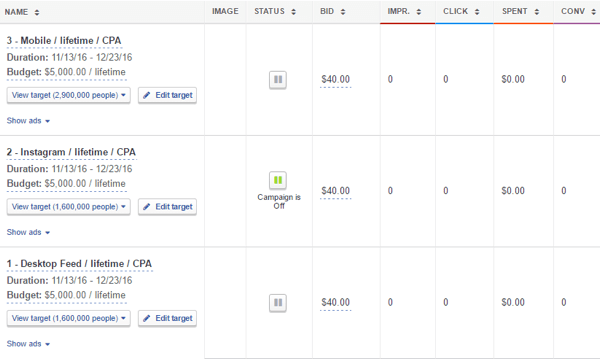
#4: Test Different Target Audiences
As part of your buyer persona research, you've identified multiple interests of this persona, which helped you craft your starter ads. Now that you've identified your best-performing ad configuration, you can research these persona interests and select several to form interest groups (also known as a target audience) on which you can test your “winning” ad.
For each ad, the ad copy, images, and placements will be the same; the only difference is the interest groups targeted for each campaign.
The example below shows a target audience campaign where the target audiences are women interested in “Bikram Yoga” and “Workouts.”
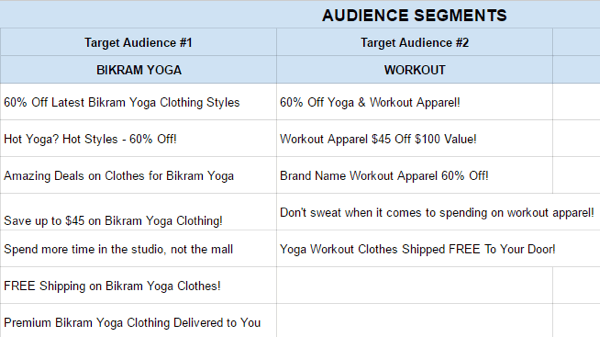
By performing such controlled tests, the only variable is the audience so you can identify the most promising fit.
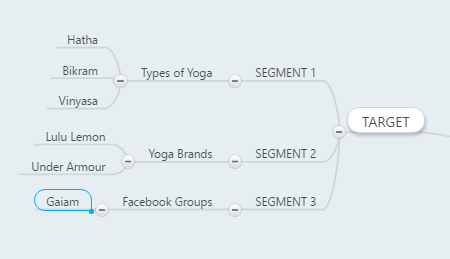
Knowing how to search for and identify target audiences is an art, and one that you should know well to perfect this ad testing process.
#5: Test Combinations of Successful Ads With Responsive Audiences
You've used your buyer persona to generate a winning ad, and then used that ad to determine a winning interest group. Now it's time to fine-tune your ads to create hyper-targeted ads for a highly promising target audience. These ads are known as target audience creative testing (TACT) ads.
To do this, use the same methodology as for your starter ads, testing these variables:
- Ad copy specifically addressing the pain points and needs of your target audience.
- Images that represent and appeal to the target audience.
- Placements to determine where your target audience is.
- URLs that move them further down the buying funnel toward conversion.
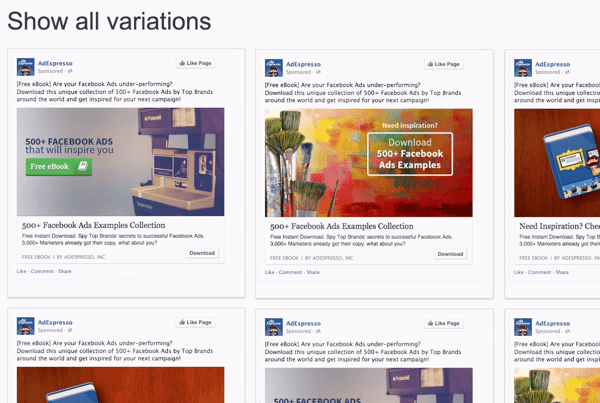
#6: Review Metrics and Increase Budget on the Winning Ad Combinations
Once you've reached the level of hyper-targeted TACT ads, it's fairly easy to spot which ads are performing best. Look at spend, conversions, CTR, and cost per action (CPA).
In the example below, the TACT campaign is testing women ages 25-34 who are interested in workouts. The ad sets are testing placement and marital status. The ad set “In a relationship, Instagram” is outperforming the other ad sets in all metrics.
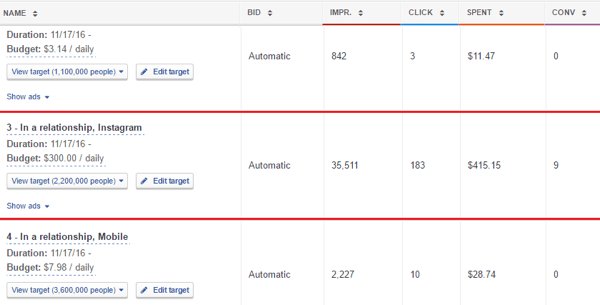
If you expand the ad set, you can see the performance of individual ads, which are combinations of ad creatives.
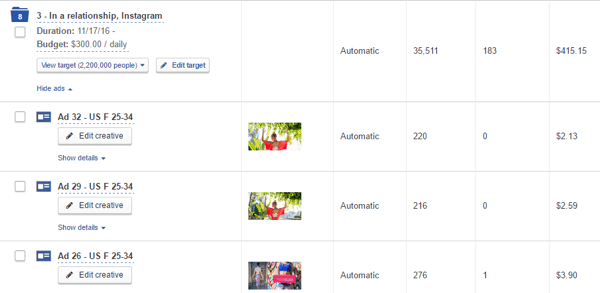
Once a particular ad or ad set has proven to perform well with your target audience, end the testing phase of your campaign.
At this point, you can continue to run the TACT campaign, but turn off all ads or ad sets that aren't performing. This way, only the ads or ad sets that have the highest CTR and lowest CPA are running. Depending on how well they continue to perform and based on your budget, you might consider increasing the budget for these ads.
You can run these ads indefinitely as long as they continue to convert.
Again, this doesn't mean you'll end up with one final campaign. At the starter ad stage, you may find multiple combinations of winning ads that can be tested among all of your target audiences. Multiple target audiences may prove to be promising and turned into TACT campaigns.
Facebook's platform is designed to provide near-limitless options for testing and targeting. To succeed, you need to take advantage of them in a smart way. That's where mapping your personas to the buying funnel comes in.
Conclusion
Follow this methodology to test the power and viability of each of your buyer personas and learn the best way to market to each of them at every stage of the buying funnel.
You'll discover which images most captivate each persona and what ad copy compels them to take your desired action. You'll also learn if they're more responsive to ads on Instagram, the Facebook news feed on desktop or mobile, or in the right column.
The ideal is to keep testing variables so your conversion rates continuously improve while your CPA continuously decreases.
What do you think? What techniques work for you when testing ads on Facebook? What's your most powerful ad optimization tip? Let us know in the comments below!
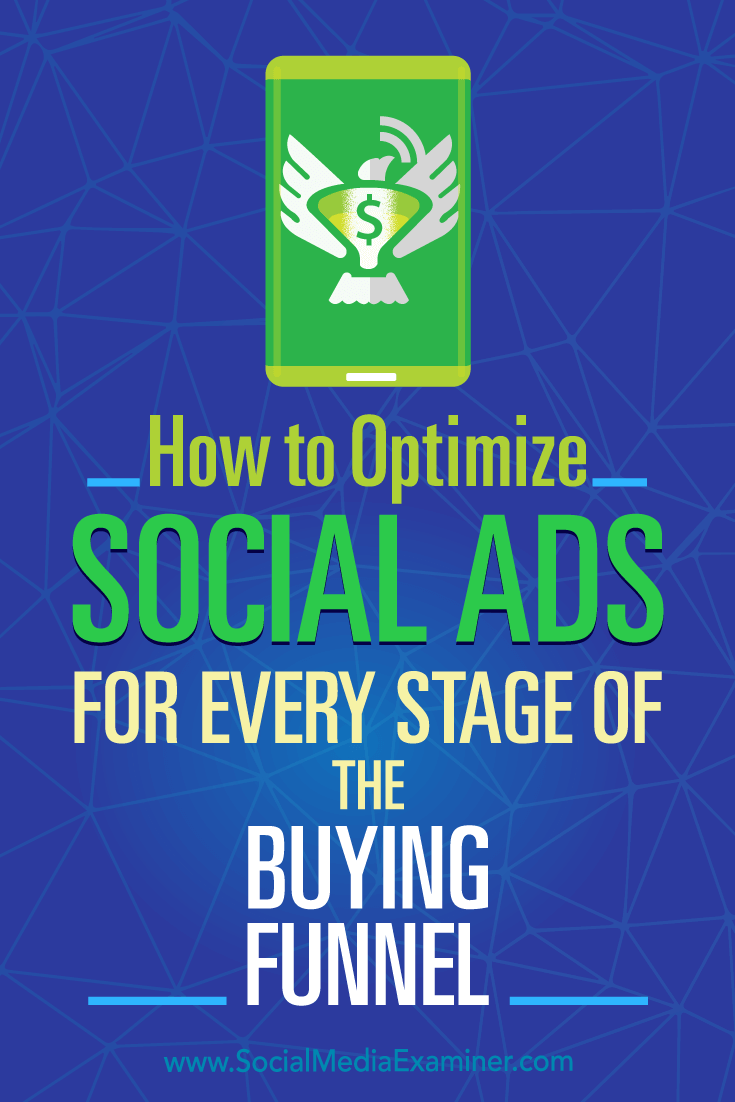
Attention Agency Owners, Brand Marketers, and Consultants

Introducing the Marketing Agency Show–our newest podcast designed to explore the struggles of agency marketers.
Join show host and agency owner, Brooke Sellas, as she interviews agency marketers and digs deep into their biggest challenges. Explore topics like navigating rough economic times, leveraging AI, service diversification, client acquisition, and much more.
Just pull up your favorite podcast app, search for Marketing Agency Show and start listening. Or click the button below for more information.

